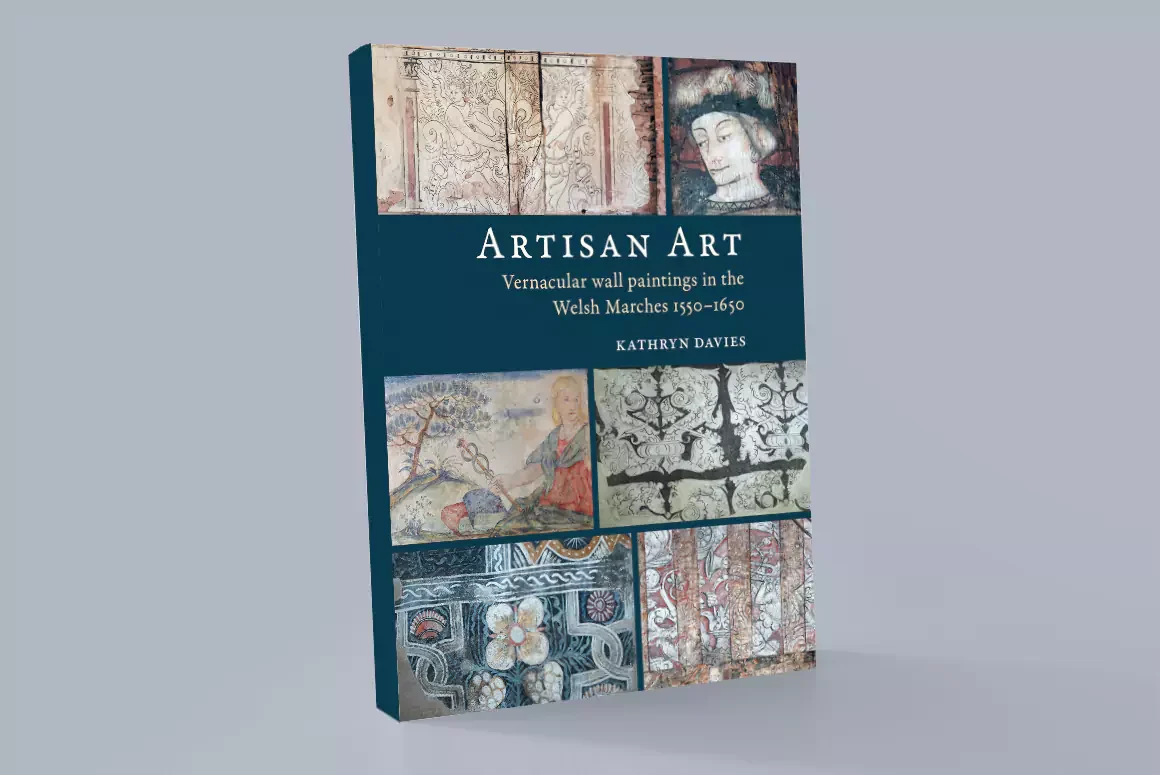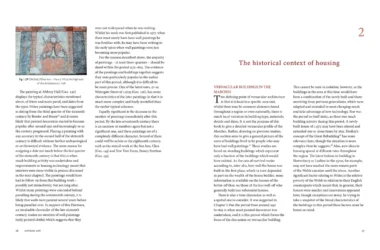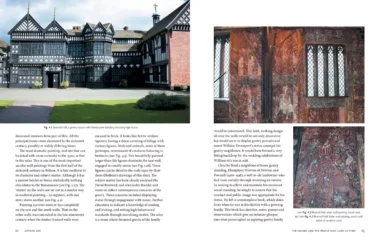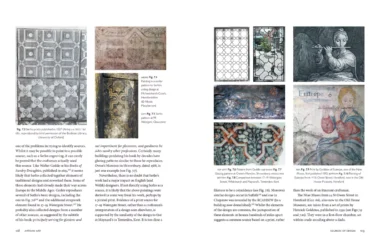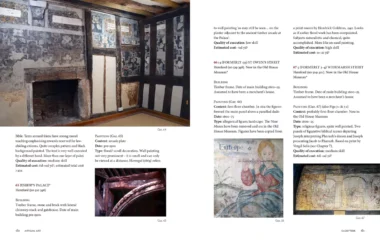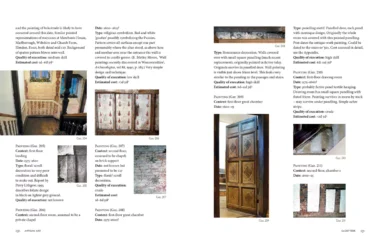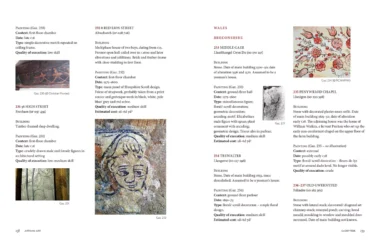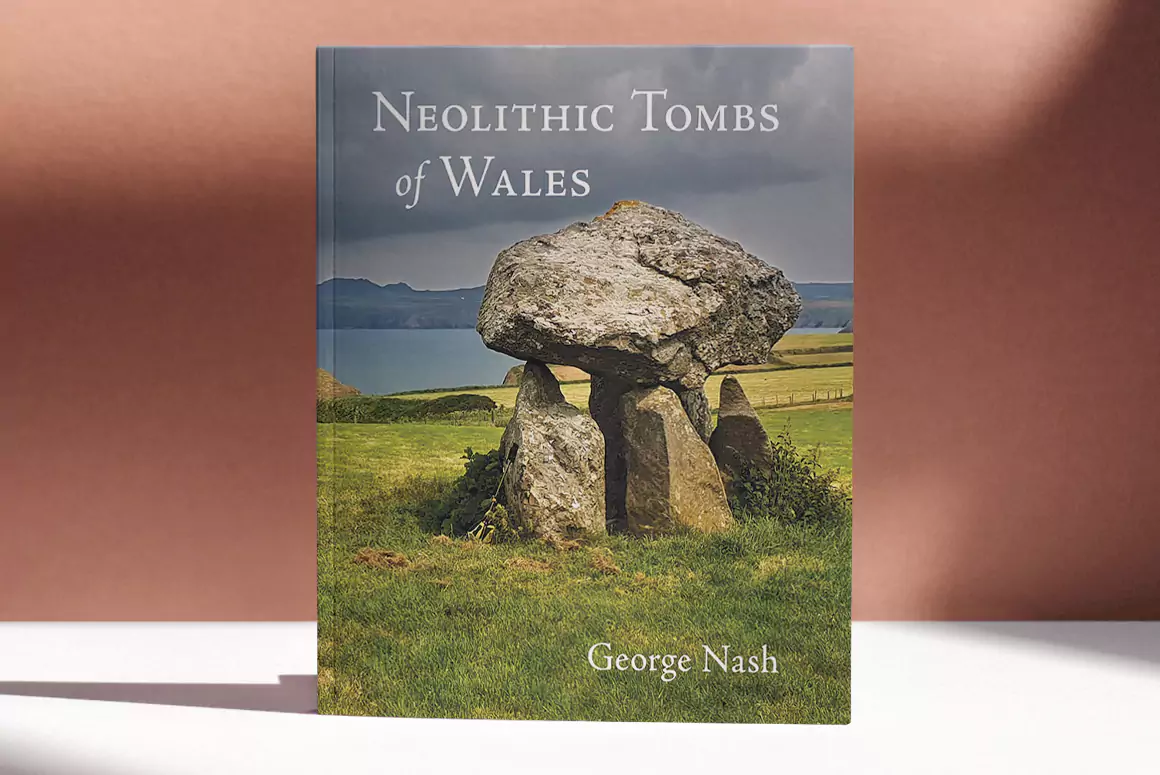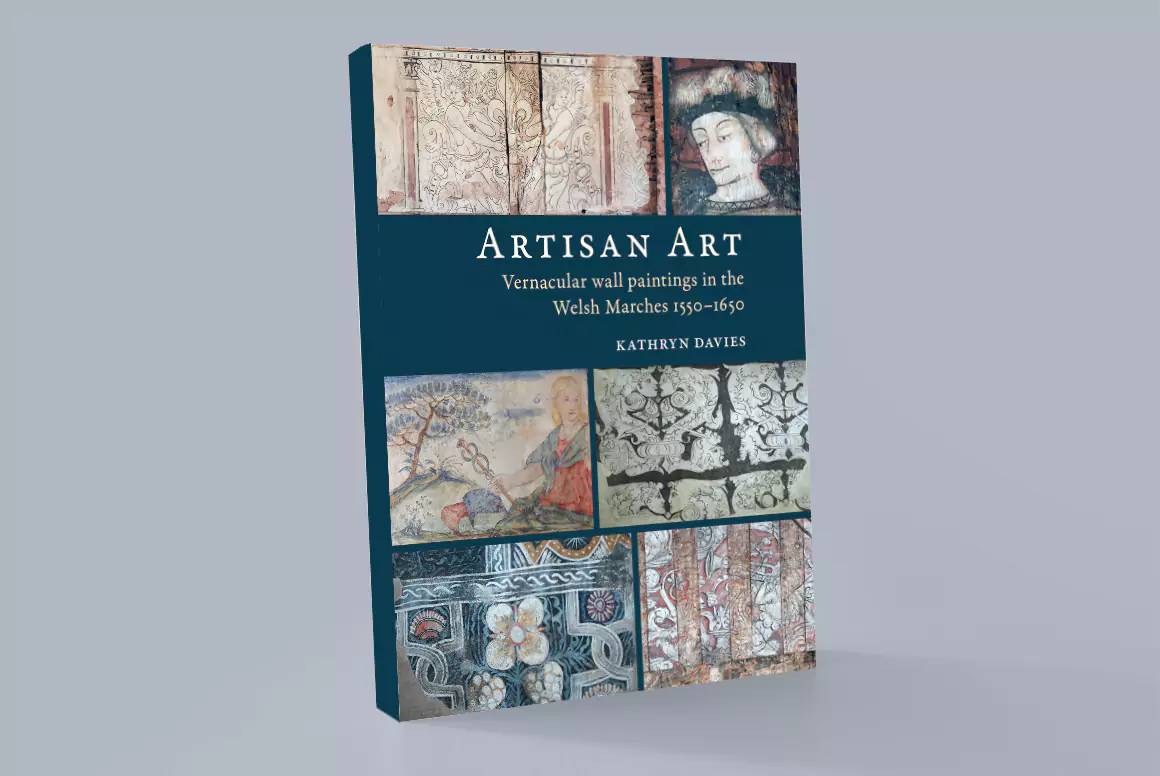Publication August 2024, Logaston Press
This richly-illustrated book explores and describes the rich diversity of decoration found in domestic wall paintings, the materials used, the craftsmen responsible and the costs involved.
In the late sixteenth century and first decade or so of the seventeenth century, most households, even those of limited means, had painted decoration in their homes, in the form of wall paintings. This short-lived but widespread phenomenon offers rare insights into the lives of ordinary people, the visual culture of the time, the nature of art and design in the domestic context, and the messages that house owners wished to communicate through the commissioning and displaying of wall paintings.
Sample spreads
This book considers the types of decoration found in domestic wall paintings, the materials used, the local craftsmen likely to have done the paintings and the costs involved. Using extensive research, wall paintings are explored through reference to probate inventories, craftsmen with painting skills, painting techniques, materials and pigments and design sources. A detailed gazetteer, covering a broad sweep of the Welsh Marches – from Gloucestershire through Monmouthshire and Radnorshire to Cheshire – includes photographs of the paintings, and places them in their building context.
As Professor Malcolm Airs expounds, the book is: ‘meticulously researched and beautifully illustrated. It should be read by all who are interested in the social and cultural history of the Tudor and Stuart age.’
Dr Kathryn Davies works as an independent consultant for planning and historic environment issues, including work for Historic England, historic buildings advice, conservation area work and advising on wall paintings.
Sample spreads
Format: 320 pages, 260 x 204 mm, c. 200 colour photographs
ISBN: 978-1-910839-70-6
Publication: 2008, revised & updated edition August 2024
Available on Logaston Press website: logastonpress.co.uk/product/artisan-art/ | £25.00
Pre-publicity quotes:
This is a fascinating study of the distinctive decoration that once adorned the houses lived in by people from all social levels during the Early Modern period. Although its principal focus is on the Welsh Marches it places the numerous surviving examples of wall paintings in a national context which explores the iconography and individual messages of those who commissioned them as well as the craftsmen who executed them and the techniques that they employed. The book is meticulously researched and beautifully illustrated. It should be read by all who are interested in the social and cultural history of the Tudor and Stuart age. – Professor Malcolm Airs, author of The Buildings of Britain: Tudor and Jacobean
Through her meticulous research and analysis, Kathryn Davies paints a vivid picture of these little- known examples of interior decoration. By drawing together the art, architecture and cultural values of the period, she raises our appreciation of their value and need to conserve these rare fragments of social history. – David McDonald, Chair, Institute of Historic Building Conservation
Kathryn Davies’ book is essential reading for anyone wanting to understand, conserve or even find wall paintings – because there are more than we know of, even with the expanded gazetteer in this new edition. The author knows her subject and makes connections with social and economic history high and low. Though rooted in the Marches, this study is based on wide reading and long practical experience. The material culture of the sixteenth and seventeenth centuries, often bold, crude, snobbish and demonstrative, is revealed as both more colourful and quirkier than we usually suppose. – David Brock, Historic England


